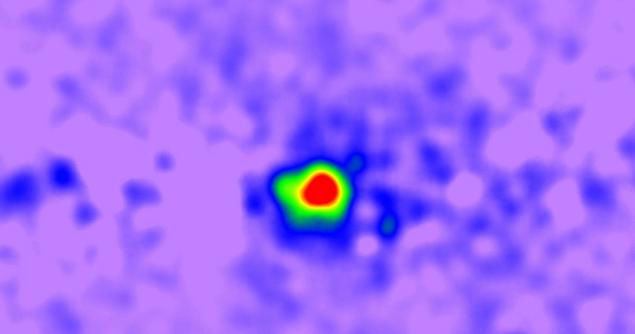Fixed a possible signal of dark matter
 Bashny.Net
Bashny.Net

Scientists have caught an atypical photon emission in x-rays coming from space, and argue that this may be evidence of the existence of dark matter particles. The signal came as a result of very rare events in the Universe: the photon was emitted as a result of destruction of a hypothetical particle, possibly a "sterile" neutrino. If the discovery is confirmed, it will open a new era of research in particle physics.
"Maybe it will bring us into a new era of astronomy," said Oleg Ruchayskiy of Leiden University. Confirmation of this discovery may lead to construction of new telescopes specially designed for studying the signals from dark matter particles. We will know where to look for these trace dark structures in space and will be able to reconstruct the formation of the Universe".
Could this discovery be the first material evidence of the existence of dark matter in the Universe? After sifting through the pile of x-ray data, scientists from the Laboratory of particle physics and cosmology EPFL and Leiden University came to the conclusion that it has identified just such a signal of dark matter particles. This substance, which is still purely hypothetical, does not fit into any of the standard models of physics other than gravitation force. The study will be published next week in the journal Physical Review Letters, writes Phys.org.
When physicists study the dynamics of galaxies and the movement of the stars, they encounter a mystery. If we take into account only the visible matter, the equations just don't add up: the elements that can be observed, is simply not enough to explain the rotation of objects and existing gravitational forces. Something is missing. Hence, scientists came to the conclusion that there is some invisible kind of matter that doesn't interact with light, and only the gravitational force. The substance called "dark matter" for its mystery, as I suppose is at least 80% of the matter in the Universe.
Recently two groups of scientists reported that the recorded signal, which can lead to dark matter. One of them, under the direction of Oleg Ruzickova and Alexey Boyarsky, also a Professor at the University of Leiden in the Netherlands, found the signal, analyzing x-rays emitted by two celestial objects — the Perseus galaxy cluster and the Andromeda galaxy. After collecting thousands of signals the XMM-Newton telescope and eliminating those that came from known sources, were identified anomaly, which eliminates the possibility of measurement error or instrument.
The signal appeared in the x-ray spectrum as a weak, atypical photon emission that cannot be attributed to any of the known forms of matter. First of all, "the distribution of the signal within the galaxy corresponds exactly to what we expected to see in the case of dark matter, that is, concentrated and intense in the center of objects and weaker and diffuse on the edges," explains Ruchayskiy. "To test your insights, we looked at data from our own galaxy, the milky Way and came to the same results," adds knights.
Source: hi-news.ru
Tags
See also
5 famous quantum experiments
Attempt to prove the absence of dark energy crashed
10 amazing galactic phenomena
Honored to be an observer
10 unusual States of matter
The discovery of massless particles can seriously speed up electronics
4 incredible chemical substance, open people
New theory may explain the mass of the Higgs
The Higgs boson may be piece of the puzzle of matter and antimatter
Why to reflect heat back into space
















